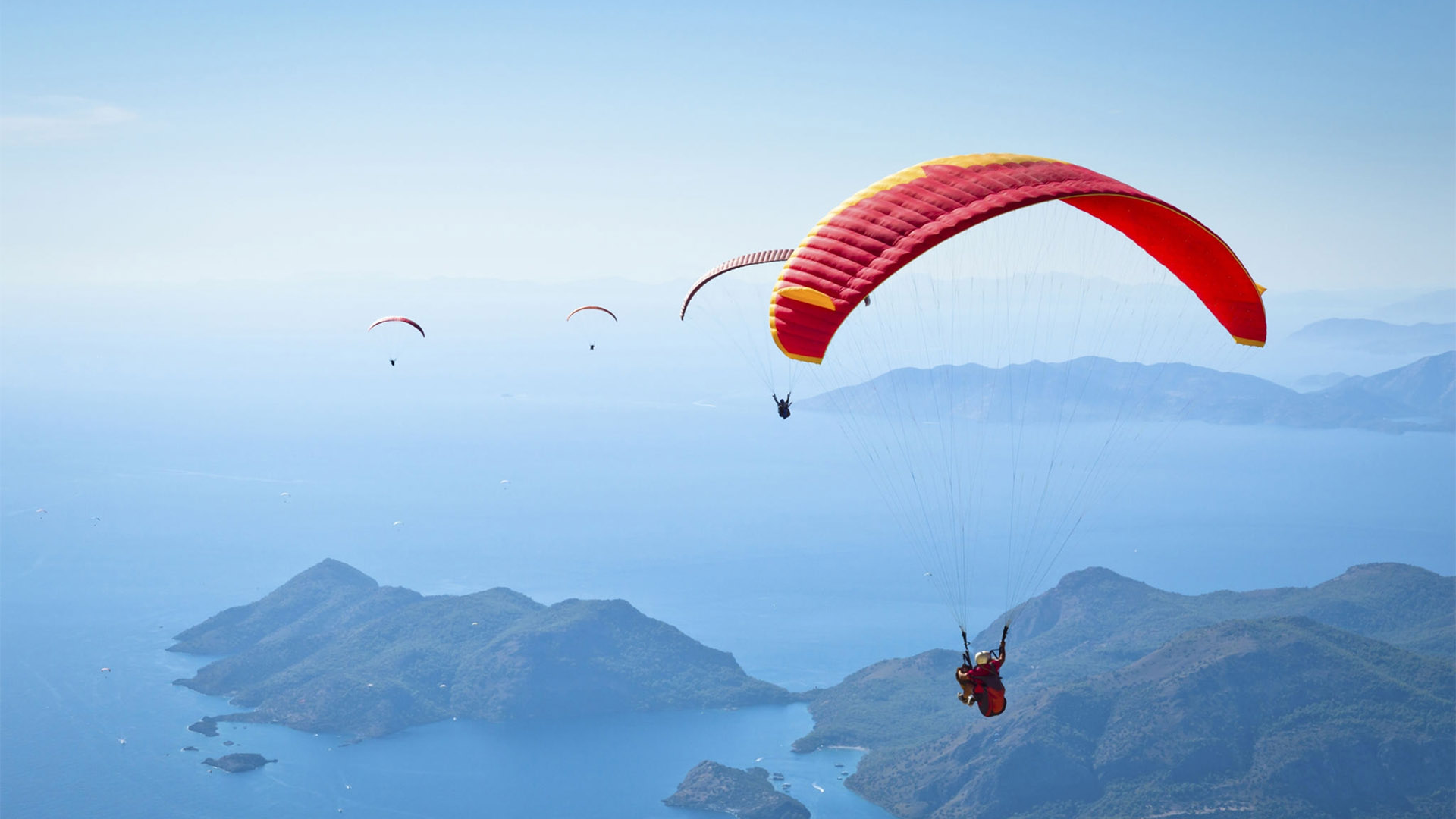Free As Birds
Although it is attractive and interesting to fly, to be free like birds, to float in the sky, to jump from the clouds, to take a break at the top of a mountain, to compete with the stars, features that are not in human creation. People have sought ways to fly from their existence to the present. Wooden wings, balloons, planes, rockets are just some of the experiments. With the developing technology, human beings can fly now, but the parachute is an emotional connection between the sky and us.
.jpg)
It is a tool that allows the object to gradually descend by taking advantage of the buoyant force of the air in an open atmosphere in the atmosphere. The parachute is produced from a nylon fabric such as silk. The umbrella shape is the most common, but there are also square and rectangular ones. Parachutes are also used in space flights. It is used in space vehicles and missile heads to decrease the speed when returning from space to earth. It is known that the main foundations of the parachute used today are found by Leonorda Da Vinci. The first landing in the world by air parachute was made by French Andre Garner on October 22, 1797. In France, he went up high with a balloon taking off from Paris, cut the rope connecting the balloon to the basket, and started to land on the ground with a parachute and successfully ended it. The first parachute jump from the plane took place in the USA. Captain Berry jumped out of the plane in the USA on March 10, 1912. By 1913, the French pilot Pegoud jumped with the parachute placed on the body of the plane and managed to jump with the first parachute in Europe.
.jpg)
What are the Parts of the Parachute?
In general, parachutes consist of five parts.
1. Complete dome
It is the part that carries the personnel and material by filling it with air. It is made of silk or nylon fabric slices and combined. There is an air hole at the top. It is taken out of the bag by pulling by means of pre-parachute or auxiliary (guide) parachute. It is tied to the parachute belt or vest with ropes.
2. Opening bag (navlaka)
This bag, in which the complete dome is placed with a special technique in order to provide ease of opening, is made of cotton fabric. The static cable in connection with the bag remains on the plane with the bag after the parachute is opened. A static hook is hung on the end of the static cable, which is opened when the button is pressed, which can be locked by itself when pulled down. Outside the opening bag, there are cloth loops on which hanging ropes will be attached.
3. Parachute Bag
This bag, which is connected to the harness, keeps the opening bag. It has static cable installation tires on it. There are four cloth loops at the ends of the four covers that will close with a string.
4. Finery Assembly
It is made of columns that can be adjusted easily to people of all sizes and is locked by means of an automatic lock. Columns in the equipment; It consists of four sections as lifting columns, back cross columns, chest cross columns and leg columns.
5. Automatic Lock
The chest lock is located at chest level, joining the legs and chest to connect the four columns.
Until the Second World War, parachutes were made of natural threads, such as linen, cotton and silk, or cellulose fibers such as viscose and acetate yarn. Due to the fact that the linen and cotton thread was thick and the silk was expensive, only parachutes were made in certain forms until the discovery of nylon in the USA and Germany in 1939. Nylon, which is very strong and withstands the shocks that occur during the opening of the parachute, soon replaced the other natural threads. All kinds of nylon yarn could be produced with newly developed production methods. The only downside of the parachute fabric woven with nylon thread was that it softened and pierced in a warm environment. This was resolved by coating a thin layer of silicone on the fabric. However, the simplest method of protecting nylon parachutes is folding the parachute very carefully.



